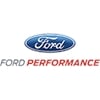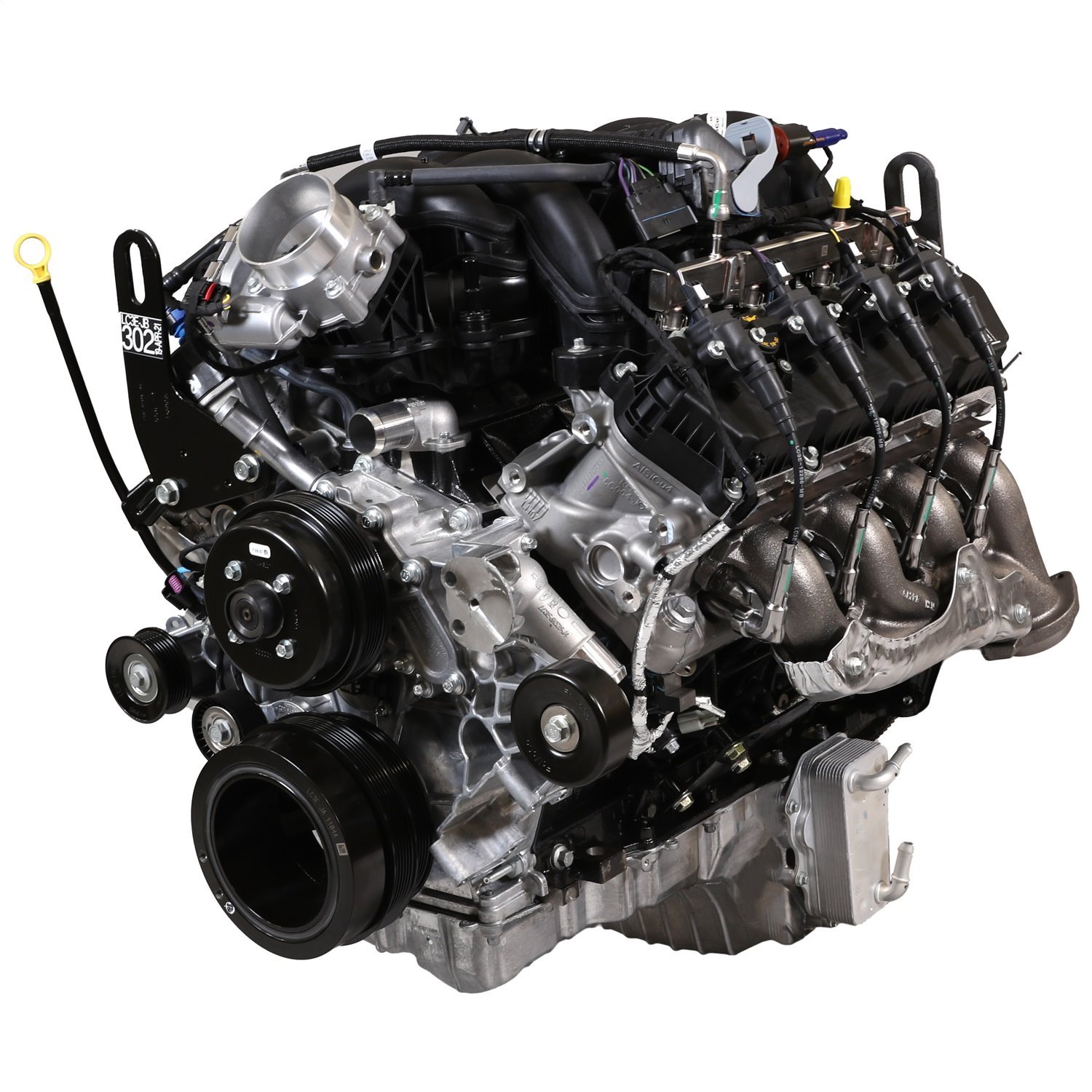Engine
Engine Specifications
- Horsepower: 430 hp at 5,500 RPM
- Torque: 475 lb.-ft. at 4,000 RPM
- Dimensions: Length 30.5 in. x Width 24.88 in. x Height 30 in.
Block Information:
- Cast Iron
- Coyote 5.0 and Modular 4.6/5.4 Bellhousing Bolt Pattern
- Bore/Stroke: 107.200 mm x 101 mm (4.220 in. x 3.977)
- Displacement: 7.3L (445 ci)
Rotating Assembly:
- Crankshaft: Forged
- Compression Ratio: 10.5:1
- Pistons: Cast aluminum
- OE Super-Duty Flexplate
Camshaft Specs:
- Camshaft: Hydraulic roller with variable cam timing (OHV Cam-in-Block)
- Valve Lift: 13.670 mm (0.538 in.) Intake / 15.260 mm (0.601 in.) Exhaust
- Firing Order: 1-5-4-8-6-3-7-2
Cylinder Head Information:
- Cylinder Heads: OE aluminum
- Valve Size: 55.130 mm (2.170 in.) Intake / 42.530 mm (1.674 in.) Exhaust
Engine Includes:
- Assembled Long Block
- Composite EFI Intake Manifold (Injectors, Fuel Rail, 80 mm Throttle Body)
- Oil Pan 8-qt
- Timing Cover
- Spark Plugs
- Spark Plug Wires
- Ignition Coils
- Dipstick
- Harmonic Balancer
- Exhaust Manifolds
- Flexplate
- Factory Lift Brackets
- Engine Cradle
Specifications:
will this mount to a ZF5 transmission from a 5.8 original engine?
Will a 7.3 engine fit in a 1977 Ford f250
Will it fit in 2022 f250
1988 F250 3/4ton extended cab 4x4, will it replace my stock 460ci Big block?
Will this fit in a 69 fast back
I have a 2010 ford Raptor with a 6.2 liter if I needed an engine replaced will this engine work ?
I am interested in dropping this in a 1976 F250 4x4, will it fit and if so, what pcm or harnesses will I need to make it run?
Will it work on a 1968 Ford Thunderbird two door Landau that originally had a factory 7.0L(429) engine? Obviously a restomod project. Will it work on the same engine mount? Would like a modern engine as a daily driver with power. It has HD rear axle.
Motor Vehicles
WARNING: Motor vehicles contain fuel, oils and fluids, battery posts, terminals and related accessories which contain lead and lead compounds and other chemicals known to the State of California to cause cancer, birth defects and other reproductive harm. These chemicals are found in vehicles, vehicle parts and accessories, both new and as replacements. When being serviced, these vehicles generate used oil, waste fluids, grease, fumes and particulates, all known to the State of California to cause cancer, birth defects, and reproductive harm.
Tools:
WARNING: Some dust created by power sanding, sawing, grinding, drilling, and other construction activities contains chemicals known to the State of California to cause cancer and birth defects or other reproductive harm. Some examples of these chemicals are: lead from lead-based paints, crystalline silica from bricks and cement and other masonry products, and arsenic and chromium from chemically treated lumber. Your risk from exposure to these chemicals varies, depending on how often you do this type of work. To reduce your exposure, work in a well-ventilated area and with approved safety equipment, such as dust masks that are specially designed to filter out microscopic particles.
Electrical Cords
WARNING: The wires of these products contain chemicals known to the State of California to cause cancer and birth defects or other reproductive harm. Wash hands after handling.



